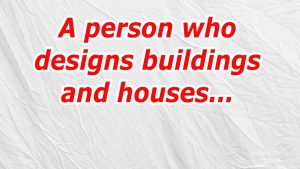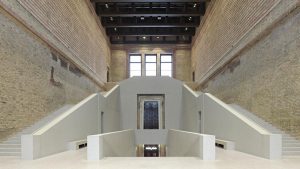What are the designs on buildings called?
When we look at buildings, we often notice intricate patterns and decorative elements that enhance their aesthetic appeal. These designs, which can be found on various architectural structures, are known by different names and serve different purposes. In this article, we will explore the common types of designs found on buildings and delve into their significance.
1. Architectural Ornamentation
Architectural ornamentation refers to the decorative elements added to buildings to enhance their visual appeal. These designs can take the form of sculptures, carvings, moldings, or reliefs. Ornamentation serves both an aesthetic and symbolic purpose, reflecting the cultural and historical context of the building.
Examples of architectural ornamentation include:
- Capital: The decorative element on top of a column or pillar.
- Frieze: The band of artwork or sculpture running horizontally along a wall.
- Corbel: A decorative bracket projecting from a wall to support an overhanging structure.
- Gargoyle: A carved grotesque figure, usually with a spout designed to direct water away from the building.
2. Façade Design
The façade of a building is its exterior face, and it often showcases specific designs and patterns. Façade design incorporates various elements such as windows, doors, balconies, and exterior cladding. These elements can be arranged in different ways to create a visually appealing composition.

Architects and designers use various techniques and styles to create captivating façades, including:
- Classical: Incorporating elements from ancient Greek or Roman architecture, such as columns and pediments.
- Modernist: Emphasizing simplicity and clean lines, often with large windows and minimal ornamentation.
- Gothic: Characterized by pointed arches, ribbed vaults, and intricate tracery.
- Art Deco: Featuring geometric shapes, vibrant colors, and stylized motifs.
3. Mosaic and Tilework
Mosaic and tilework are forms of decorative art used to embellish the surfaces of buildings. These designs often involve the intricate arrangement of small colored pieces, such as glass, stone, or ceramic tiles, to form patterns, images, or intricate motifs.
Popular types of mosaic and tilework include:
- Tessellations: Repeating geometric patterns that fit together without gaps or overlaps.
- Medallions: Decorative round or oval designs often used as a focal point on walls or floors.
- Zellige: Intricate tilework found in traditional Moroccan architecture, featuring complex geometric patterns.
- Murals: Large-scale mosaic artworks depicting scenes, people, or stories.
In Conclusion
Designs on buildings are diverse and serve as a testament to human creativity and artistic expression. Whether it’s the ornate sculptures of classical architecture, the sleek lines of modernist facades, or the captivating beauty of mosaic and tilework, these designs add depth, character, and cultural significance to our built environment.
Understanding the various types of designs found on buildings allows us to appreciate the artistry behind these architectural creations and recognize the historical and cultural value they hold. The designs on buildings not only enhance their visual appeal but also tell stories, represent traditions, and contribute to the identity of a place.

Next time you walk by a building, take a moment to observe the intricate details and designs adorning its exterior. You might discover the influence of ancient civilizations, the elegance of a particular architectural style, or the vibrant colors of mosaic artwork. These designs are a reflection of our collective heritage and the creativity of architects, designers, and artisans throughout history. For building designs see here.
By appreciating and understanding the designs on buildings, we can develop a deeper connection with our surroundings. We become more aware of the artistry that goes into constructing our cities and towns, and we gain insight into the cultural significance embedded in these architectural treasures.
In conclusion, the designs on buildings encompass a wide range of elements, including architectural ornamentation, façade designs, and mosaic and tilework. These designs not only enhance the visual appeal of buildings but also convey stories, cultural traditions, and historical significance. So, next time you come across a beautifully designed building, take a moment to admire and appreciate the craftsmanship and creativity that went into its creation.
